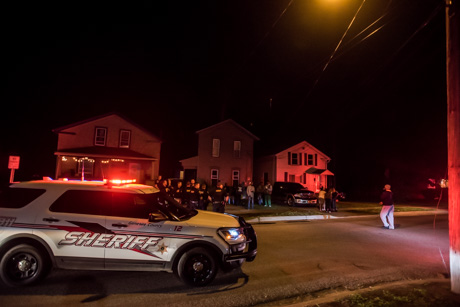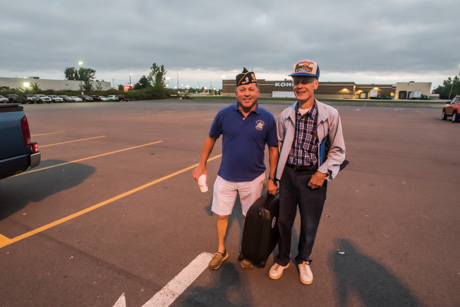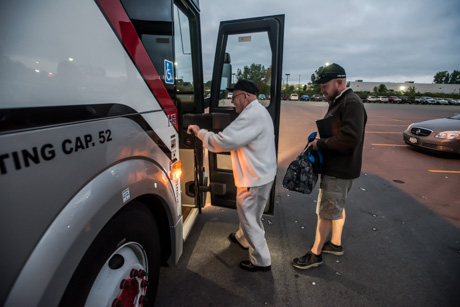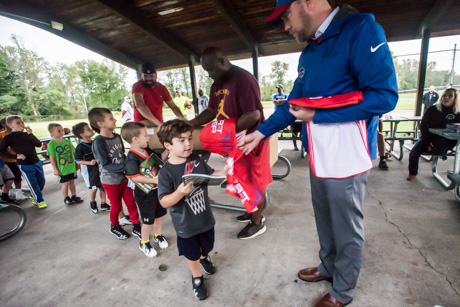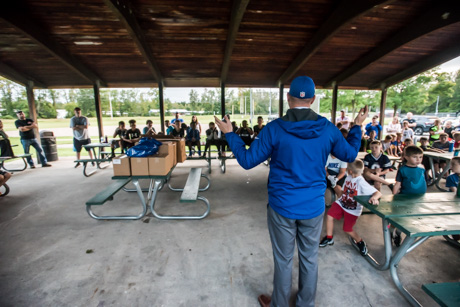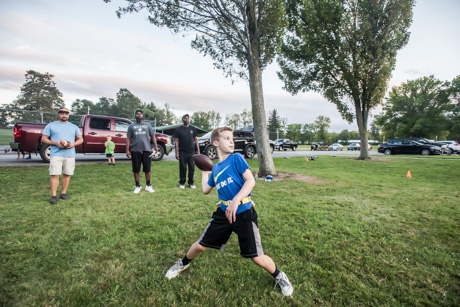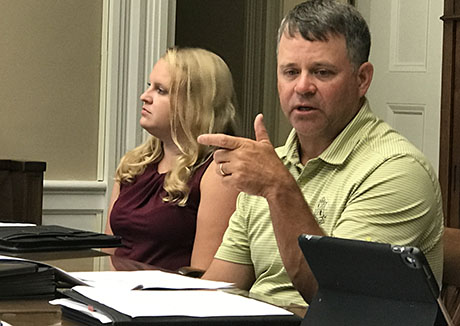During the Public Service Committee meeting Tuesday, Highway Superintendent Tim Hens updated members of the County Legislature on the work of his department.
On funding, the proposed county road budget for 2019 is $5,527,130. Asphalt prices have increased 20 percent in 2018. Salt prices are up 16 percent. Gas prices have gone from $2 a gallon to $2.35 and climbing, though prices should stabilize in 2019, Hens said. The department has 57 employees (54.25 full-time equivalents), working in administration, highway, parks, airport, fleet, and facility maintenance.
Besides a share of the general fund, the department receives grants for projects. State aid in 2018 has been $1.6 million, plus $382,193 from the PAVE-NY fund, $240,498 for extreme weather recovery.
Federal aid, Hens said, is still limited.
The county, including applications from towns, has 31 applications made to BRIDGE-NY, with an announcement for funding expected in the fall.
Hens anticipates needing $2,131,466 for roach machinery in 2019. The department is making lease payments on a dozer, loader, an excavator, and needs a wheel loader, pickup, 2.5-ton truck, and mid-sized track excavator.
The county is responsible for 260 miles of highway. There are 92 bridges longer than 20 feet and 278 bridges and culverts longer than five feet and less than 20 feet.
"We need to replace two bridges a year to keep our heads above water and we have been doing one bridge a year based on available federal funding," Hens said.
The rating for the Lyons Street Bridge has been reduced from eight tons to seven. Pratt Road Bridge has been reduced from 19 tons to seven and is scheduled for replacement next year.
Reconstruction of the Stroh Road Bridge is nearly complete and it should open Oct. 1, three weeks ahead of schedule.
Four culverts in the county of less than 20-foot span were replaced this summer.
The county also completed paving or overlay projects on Indian Falls Road, North Lake Road, North Byron Road, Prole Road Extension, South Street in Pavilion, Colby Road, Hickox, Walker, and Gillate roads in Alexander.
These projects often included shoulder widening to 30 feet.
The widening has gone over well with residents in those areas, Hens said, who now have more room for walking and biking.
Much of the material used for this work is recycled asphalt from the work at the County Airport to replace the runway and taxiways. This has produced more than 16,000 tons of asphalt for the county to process and reuse.
"It's cheap material," Hens said. "But it's not free. We still have to process it and handle it."
As for county parks, Hens praised the work of Shannon Lyaski, conservation education program coordinator, and Paul Osborn, parks director.
"We've seen year-over-year growth in the environmental programs," Hens said. "We've hit record numbers for revenue and people attending events at the County Park."
He said Lyaski has done a good job with programming for events at the Interpretive Nature Center.
The revenue generated by these programs cover her salary, Hens said.
As for Osborn, Hens said he's a master at rounding up volunteer workers and scavenging for material for structures in the parks.
"He flips over rocks and pulls people out and he's got people down there cleaning, cutting and trimming," Hens said.
One of the annual programs at the County Park is Camp Hard Hat, which brings in high school students in to build a project under the supervision of a BOCES instructor.
This year, the crew built a footbridge using guardrails Osborn scavenged from the old Stroh Road Bridge.
Attendance has also been up at the DeWitt Recreation Area.
Hens said work on a bridge through the wetlands in the park for the Ellicott Trail should be completed by fall. The county is waiting on the Town of Batavia to finish its part of the trail and Hens is hopeful the trail will open next spring.
For facilities, significant projects in 2018 include a new jail elevator, a security system, new fire alarm for the County Courthouse, and completion of an energy performance contract. For 2019, the county is waiting on a grant for the stonework on the facade of the jail building and a grant is pending for energy upgrades at the Animal Shelter.
In the 20 years since Hens became highway superintendent, the County has invested $30 million in capital improvements, which includes new hangars, a new terminal, and a new runway and taxiways. The funds were all generated by grants or fees for use of the airport and fuel so there have been no direct costs to local taxpayers.
There are 21 jobs at the airport, including private employers, and generates $2.35 million in economic impact.
The airport has brought in more money than it cost in 16 of the past 17 years. Hens anticipates the airport will only break even in 2018 due to a prolonged winter and construction projects.
Pete Zeliff is building a new hangar for corporate jets, which should help generate more revenue for the county through additional fuel sales.
Hens has also been heavily involved in public water projects with several new projects starting this year and more planned for 2019.
PHOTO: Tim Hens in the foreground and Laura Wadhams, the county's new assistant engineer, who started her job a little over a week ago.
